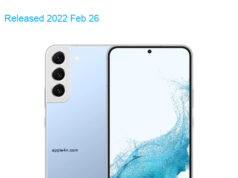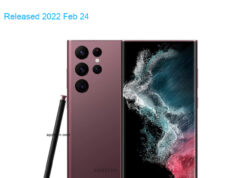| Brand | OnePlus |
| Model | Nord 2T 5G Premium Edition Dual SIM TD-LTE IN 256GB CPH2401 |
| Released | 2022 May |
| Announced | 2022 May |
| Hardware Designer | OnePlus |
| Manufacturer | BBK Electronics |
| Codename | BBK 2399 |
| General Extras | Haptic touch feedback , Tactile touch feedback |
| Device Category | Smartphone |
| Width | 73.2 mm |
| Height | 159.1 mm |
| Depth | 8.2 mm |
| Dimensions | 2.88×6.26×0.32 inches |
| Mass | 190 g |
| Platform | Android |
| Operating System | Google Android 12 (S) |
| Software Extras | Voice Command , Business card recognition , Navigation software , Augmented Reality (AR) , Intelligent personal assistant , Face Recognition |
| CPU Clock | 3000 MHz |
| CPU | MediaTek Dimensity 1300 MT6893Z, 2022, 64 bit, octa-core, 6 nm, ARM Mali-G77 GPU |
| RAM Type | LPDDR4x SDRAM |
| RAM Capacity (converted) | 12 GiB RAM |
| Non-volatile Memory Interface | UFS 3.1 |
| Non-volatile Memory Capacity (converted) | 256 GB ROM |
| Display Hole | 1-hole |
| Display Diagonal | 163.3 mm |
| Resolution | 1080×2400 |
| Horizontal Full Bezel Width | 6.19 mm |
| Display Area Utilization | 85.7% |
| Pixel Density | 409 PPI |
| Display Type | AM-OLED display |
| Number of Display Scales | 16.8M |
| Display Refresh Rate | 90 Hz |
| Scratch Resistant Screen | Gorilla Glass 5 |
| Graphical Controller | ARM Mali-G77MP9 |
| A/V Out | No |
| Microphone(s) | stereo |
| Loudspeaker(s): | stereo |
| Audio Output: | USB Type-C |
| Supported Cellular Bands | GSM850 , GSM900 , GSM1800 , GSM1900 , UMTS2100 (B1) , UMTS1900 (B2) , UMTS1700/2100 (B4) , UMTS850 (B5) , UMTS900 (B8) , UMTS800 (B19) , LTE2100 (B1) , LTE1900 (B2) , LTE1800 (B3) , LTE1700/2100 (B4) , LTE850 (B5) , LTE2600 (B7) , LTE900 (B8) , LTE700 (B12) , LTE700 (B17) , LTE800 (B18) , LTE800 (B19) , LTE800 (B20) , LTE850 (B26) , TD-LTE2000 (B34) , TD-LTE2600 (B38) , TD-LTE1900 (B39) , TD-LTE2300 (B40) , TD-LTE2500 (B41) , NR2100 (N1) , NR1800 (N3) , NR850 (N5) , NR900 (N8) , NR700 (N28) , TD-NR2300 (N40) , TD-NR2500 (N41) , TD-NR3500 (N78) bands |
| Supported Cellular Data Links | GPRS , EDGE , UMTS , HSUPA , HSUPA 5.8 , HSDPA , HSPA+ 21.1 , HSPA+ 42.2 , DC-HSDPA 42.2 , LTE , LTE 100/50 , LTE 150/50 , LTE 300/50 , LTE 300/75 , LTE 300/100 , LTE 400/150 , LTE 1000/100 , LTE 1200/200 , NR 1500 , NR 2600 data links |
| SIM Card Slot | Nano-SIM (4FF) |
| Complementary Phone Services | Voice transmission , Voice speaker , Vibrate , Speakerphone , ANC , HD Voice , VoLTE |
| Dual Cellular Network Operation | Dual standby |
| Sec. Supported Cellular Networks: | GSM850 , GSM900 , GSM1800 , GSM1900 , UMTS2100 (B1) , UMTS1900 (B2) , UMTS1700/2100 (B4) , UMTS850 (B5) , UMTS900 (B8) , UMTS800 (B19) , LTE2100 (B1) , LTE1900 (B2) , LTE1800 (B3) , LTE1700/2100 (B4) , LTE850 (B5) , LTE2600 (B7) , LTE900 (B8) , LTE700 (B12) , LTE700 (B17) , LTE800 (B18) , LTE800 (B19) , LTE800 (B20) , LTE850 (B26) , TD-LTE2000 (B34) , TD-LTE2600 (B38) , TD-LTE1900 (B39) , TD-LTE2300 (B40) , TD-LTE2500 (B41) , NR2100 (N1) , NR1800 (N3) , NR850 (N5) , NR900 (N8) , NR700 (N28) , TD-NR2300 (N40) , TD-NR2500 (N41) , TD-NR3500 (N78) |
| Sec. Supported Cellular Data Links: | GPRS , EDGE , UMTS , HSUPA , HSUPA 5.8 , HSDPA , HSPA+ 21.1 , HSPA+ 42.2 , DC-HSDPA 42.2 , LTE , LTE 100/50 , LTE 150/50 , LTE 300/50 , LTE 300/75 , LTE 300/100 , LTE 400/150 , LTE 1000/100 , LTE 1200/200 , NR 1500 , NR 2600 |
| Sec. SIM Card Slot | Nano-SIM (4FF) |
| Touchscreen Type | Capacitive multi-touch screen |
| Expansion Interfaces | No |
| USB | USB 2.0 |
| USB Services | USB charging , USB fast charging , USB Host , USB OTG 1.3 , USB OTG 2.0 , USB PD , USB PD 2.0 , USB PD 3.0 |
| USB Connector | USB C reversible |
| Max. Charging Power | 80.0 W |
| Bluetooth | Bluetooth 5.2 |
| Wireless LAN | 802.11a , 802.11b , 802.11g , 802.11n , 802.11ac , 802.11ax |
| Wireless Services | Wi-Fi Direct , Wi-Fi Tethering , WiDi , Wi-Fi Calling |
| NFC | NFC A , NFC B |
| FM Radio Receiver | No |
| Complementary Satellite Services | Simultaneous GPS , A-GPS , Geotagging , QuickGPS , NavIC |
| Supported GLONASS protocol(s) | L1OF |
| Supported Galileo service(s) | E1 |
| Supported BeiDou system (BDS) | B1I BeiDou receiver |
| Camera Placement | Rear |
| Camera Image Sensor | BSI CMOS |
| Image Sensor Pixel Size | 1.00 micrometer |
| Number of effective pixels | 50.3 MP camera |
| Aperture (W) | f/1.80 |
| Zoom | 1.0 x optical zoom |
| Focus | CD AF , PD AF |
| Video Recording | 3840×2160 pixel |
| Flash | dual LED |
| Camera Extra Functions | EIS , EIS (video) , Pixel unification , HDR photo , HDR video , Red-eye reduction , Slow motion video , Burst mode , Touch focus , Macro mode , Panorama Photo , Face detection , Face tagging , Smile detection , Face retouch , Face retouch (video) , Intelligent scene detection |
| Aux. Camera Image Sensor | BSI CMOS |
| Aux. Camera Number of Pixels | 8.0 MP aux. cam |
| Aux. Camera Aperture (W) | f/2.20 |
| Aux. Camera Extra Functions | EIS , EIS (video) , HDR photo , Burst mode , Panorama Photo , Face tagging , Smile detection , Face retouch , Intelligent scene detection |
| Aux. 2 Camera Image Sensor | Mono CMOS |
| Aux. 2 Camera Number of Pixels | 1.9 MP aux. 2 cam |
| Aux. 2 Camera Aperture (W) | f/2.20 |
| Aux. 3 Camera Image Sensor | No |
| Aux. 4 Camera Image Sensor | No |
| Secondary Camera Placement | Front |
| Secondary Camera Sensor | BSI CMOS |
| Secondary Camera Number of pixels | 32.0 MP sec. cam |
| Secondary Aperture (W) | f/2.40 |
| Secondary Video Recording | 1920×1080 pixel |
| Secondary Camera Extra Functions | EIS , EIS (video) , Pixel unification , HDR photo , HDR video , Burst mode , Panorama Photo , Face detection , Face tagging , Smile detection , Face retouch , Face retouch (video) , Intelligent scene detection |
| Sec. Aux. Cam. Image Sensor | No |
| Built-in compass | Yes |
| Built-in accelerometer | 3D accelerometer |
| Built-in gyroscope | 3D gyro |
| Additional sensors | In-screen FP sensor , L sensor , P sensor |
| Protection from solid materials | Yes |
| Protection from liquids | Yes |
| Battery | Li-ion polymer (LiPo) |
| Battery Cells in Parallel | Yes |
| Nominal Battery Capacity | 4500 mAh battery |
| Market Countries | India |
| Market Regions | Asia |
| Price | 407.99 USD |
| Added | 2025-02-14 |
Specifications data description of this 📱OnePlus Nord 2T 5G Premium Edition Dual SIM TD-LTE IN 256GB CPH2401📱
Title: OnePlus Nord 2T 5G Premium Edition Dual SIM TD-LTE IN 256GB CPH2401 – A Comprehensive Specification Guide 📅🚀
Introduction:
Welcome to our blog post, where we will dive deep into the specifications of the OnePlus Nord 2T 5G Premium Edition Dual SIM TD-LTE IN 256GB CPH2401. This device is the latest addition to the OnePlus Nord lineup and promises high-end performance and an immersive user experience. Let’s take a closer look at what this device has to offer. 🌐🤖
Lineup:
The OnePlus Nord 2T 5G Premium Edition is a part of the Nord lineup, which includes devices that cater to users looking for a balance between affordability and high-end specifications. With the Nord 2T 5G, OnePlus aims to provide users with a superior experience without breaking the bank. 🏋️
Design:
The OnePlus Nord 2T 5G Premium Edition has a sleek and stylish design, with a metal frame and a glass back that gives it a premium look and feel. The device is available in two colors – blue and silver – and has a slim profile, making it comfortable to hold. 🌈
Specifications:
🌐NETWORK: The device supports dual SIM TD-LTE in 256GB, ensuring fast and reliable connectivity.
📅LAUNCH: The device is the latest addition to the OnePlus Nord lineup, with a premium design and high-end specifications.
🏋️BODY: The device has a slim profile and a premium metal and glass design, with two color options available.
🌈 DISPLAY: The device has a vivid display, with a high resolution and a smooth refresh rate.
🤖 OS 🛠️: The device runs on a custom version of Android, with a clean and user-friendly interface.
🚀 Chipset 🔧: The device is powered by a high-end chipset, with exceptional performance and efficient power consumption.
💪 CPU 🖥️: The device is equipped with a powerful CPU, with high clock speeds and multiple cores for efficient multitasking.
🎮 GPU 💻: The device has a dedicated GPU, providing smooth and fluid graphics performance in games and other visually demanding applications.
🧠 MEMORY 🗂️: The device has ample memory, with 12GB of RAM for smooth multitasking and fast app loading.
📷 CAMERA 🎥: The device has a high-resolution camera, with advanced features such as autofocus and optical image stabilization.
🔈 SOUND 🎵: The device has high-quality audio, with support for popular audio formats and advanced sound processing technologies.
📡 COMMS 📶: The device supports fast and reliable data connectivity, with dual SIM TD-LTE in 256GB.
💡 FEATURES 🎁: The device has a range of advanced features, such as facial recognition, a fingerprint scanner, and a customizable user interface.
🔋 BATTERY🔌 : The device has a large battery, providing long battery life and fast charging capabilities.
Conclusion:
In conclusion, the OnePlus Nord 2T 5G Premium Edition Dual SIM TD-LTE IN 256GB CPH2401 is an impressive device, with a premium design, high-end specifications, and a range of advanced features. Whether you’re looking for a device for gaming, multimedia consumption, or productivity, the Nord 2T 5G has you covered. We invite our readers to leave a comment and share their thoughts on this device. Thank you for reading! 🌐🤖🏋️🌈🌐🚀🔧💪








